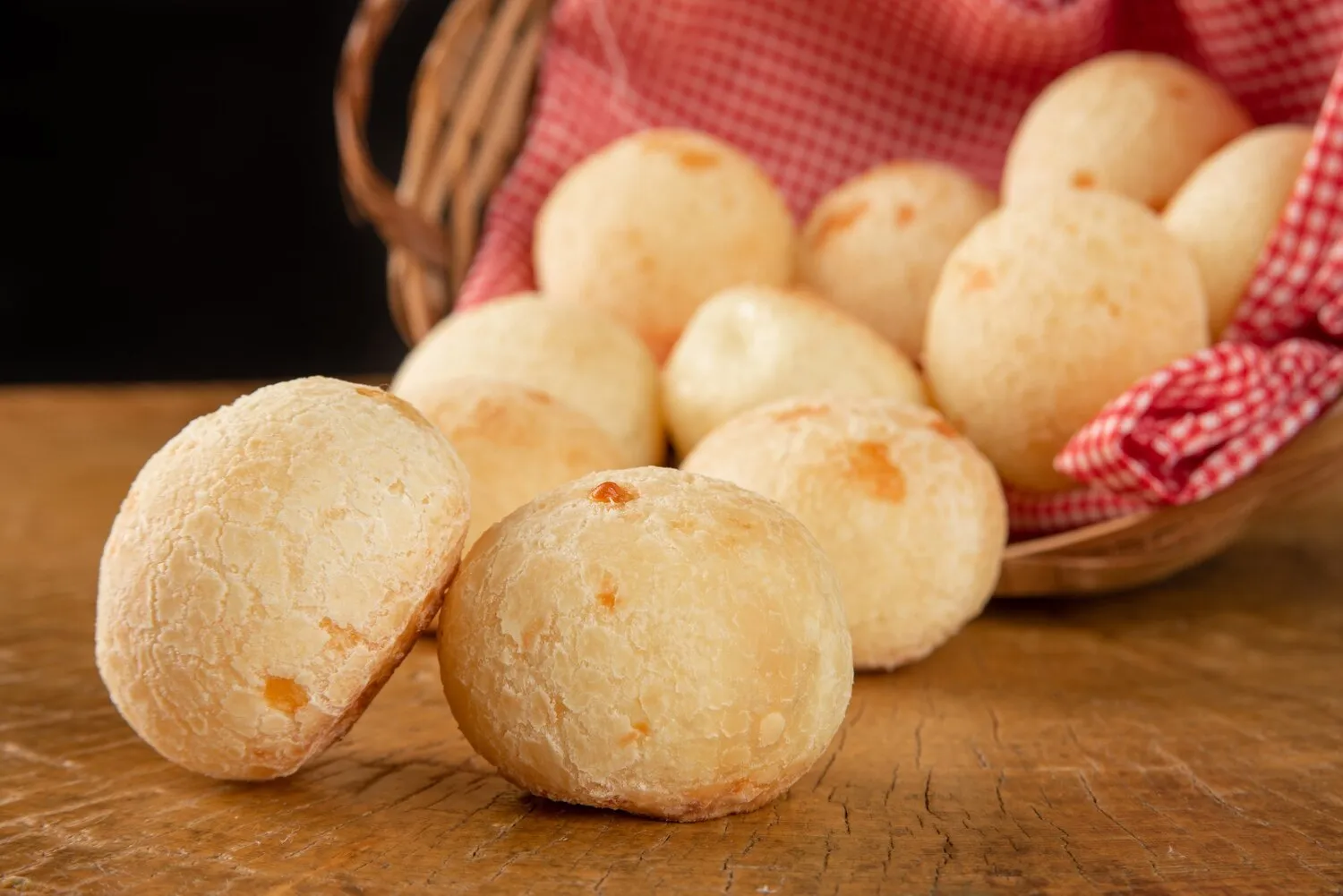
Pão de Queijo
Cheese bread. Small, baked cheese rolls, a popular snack and breakfast item in Brazil.
Nutrition Facts
* The % Daily Value (DV) tells you how much a nutrient in a serving of food contributes to a daily diet. 2,000 calories a day is used for general nutrition advice.
The exact origins of Pão de Queijo are debated, but it's believed to have emerged in the state of Minas Gerais, Brazil, sometime in the 18th century. Contributing factors include the abundance of cassava starch (tapioca flour), cheese production in the region, and possibly a shortage of wheat flour which spurred experimentation with alternative ingredients by enslaved Africans and farmers.
Pão de Queijo is deeply ingrained in Brazilian culture, particularly in Minas Gerais. It's more than just food; it's a symbol of hospitality, comfort, and a staple of Brazilian breakfasts and snacks.
Hospitality
Offering Pão de Queijo to guests is a common gesture of hospitality in Brazilian homes and cafes. It's seen as a welcoming and comforting food.
Breakfast Staple
Pão de Queijo is a very popular breakfast item, often enjoyed with coffee or juice. It's readily available in bakeries and cafes throughout Brazil.
Regional Pride
Minas Gerais is particularly proud of Pão de Queijo. The state is considered its birthplace and home to some of the best variations of the dish.
Social Gatherings
Pão de Queijo is commonly served at parties, family gatherings, and other social events as a simple and crowd-pleasing snack.
Pão de Queijo offers a delightful combination of cheesy, tangy, and slightly chewy textures with a mild, savory flavor profile.
The primary flavor comes from the cheese, traditionally Minas cheese (semi-cured), but other cheeses like Parmesan, mozzarella, or even cheddar can be used for variation. Tapioca flour (also known as cassava starch or polvilho) provides a slightly tangy and chewy texture. The milk and eggs contribute to the richness and binding of the dough, while the oil (often vegetable oil) helps create a slightly crispy exterior. The overall result is a balanced, subtly savory, and satisfying taste.
Tapioca Flour Matters
Use both sweet (doce) and sour (azedo) tapioca flour for a balanced flavor and texture. The proportion affects the chewiness and tanginess. Experiment to find your preference.
Cheese is Key
The type of cheese used significantly impacts the flavor. Minas cheese is traditional, but other cheeses or combinations can be used. Consider the saltiness and melting properties of the cheese.
Scald the Tapioca
Scalding the tapioca flour with hot milk or water helps activate the starch and create a smoother, more elastic dough. This is crucial for the characteristic chewy texture.
Temperature Control
Bake at the right temperature to ensure the Pão de Queijo puffs up and has a golden-brown exterior. Avoid overcrowding the baking sheet.
Freezing for Later
Pão de Queijo dough can be frozen before baking. Simply shape the dough into balls and freeze on a baking sheet. Once frozen, transfer them to a freezer bag. Bake from frozen, adding a few minutes to the baking time.
Explore additional Handy food dishes and restaurants
Explore Handy foodDiscover top dining spots and culinary experiences in Itu.
Explore ItuLearn more about the food culture, restaurant scene, and culinary heritage of Brazil.
Explore Brazil